Today we woke up and mapped out our travels to hit the three locations on our wish list: Fushimi Inari-taisha Shrine, Tofuku-ji Temple and the Arashiyama Bamboo Forest. Just a heads up we did not make it to Arashiyama. We ended up spending a huge amount of time at Inari, which was a lot bigger than we thought it was going to be as well as running into some navigation issues in finding a viable way to actually get to Arashiyama. Long story short, we were unable to read some crucial maps due to being in japanese as we were deeper into the subway system than what seems most tourists venture as english was becoming fewer and farther between for us. We made a call to scrap the endeavor and head to Gion instead.
Ok now let’s break down the day. First we headed out to Inari, which was a very short train ride from Kyoto Station. When we got off the train here we felt more like we were in the thick of Kyoto, as opposed to more well kept stations. I say that because the train station was very small and looked more like an afterthought just to allow easy travel to Inari, which was literally right across the street from the station. We weren’t complaining about the short walking distance. Also do not confuse what I’m saying thinking that the station was dirt and not well kept, it was, but just had a more raw feeling to it than the other stations we’ve travelled.
Inari is the god of rice and historically speaking many japanese merchants and businessmen paid homage to this god. The shrine today is comprised of what seemed like thousands of torii, much like the one we saw on Miyajima Island, but not as big. Each of the torii are actually paid for and donated by japanese businesses. On one said of each gate it is plain and painted entirely in and orange-red coloring with a single black bar at the top of it. On the reverse side of each torii are kanji inscriptions of the donators names and date of donation. Interspersed along the trail of torii are various shinto shrines. Again, many japanese come here to pray for help in times of need or to simply ask for a good blessing.
Here we are at the torii gate leading to the trails:

Here’s the entrance to the first torii trail at the base of Mount Inari:

When you first enter it’s extremely crowded, but as you keep going up the mountain the crowd thins out pretty well. Here’s what walking through all the torii looks like at the beginning of the trail:
These pictures show the reverse sides of the torii, these sides faces away from the direction you walk when traversing the trail:

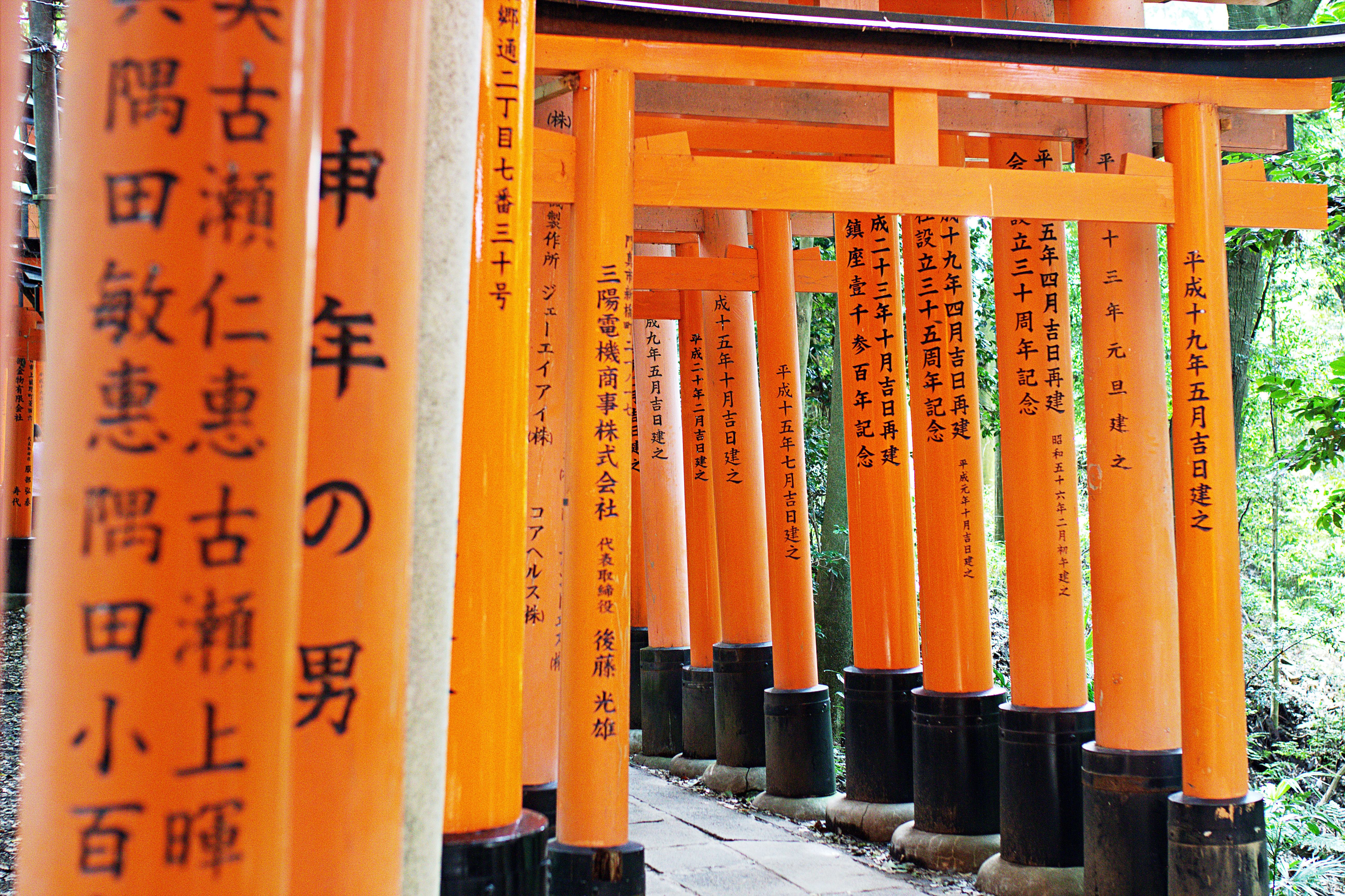
We decided to put in a blessing too at one of the shrines before continuing along the trail. We wrote ours on a wooden kitsune (fox). We asked for a long and happy life together since we are newly engaged and getting ready for our wedding next year. The way the kitsune works is you are given a blank wooden face on which you draw any sort of face you want and then on the back put your address, names and blessing. I drew a Harry Potter face here it is below:

And here’s its resting place until it is removed by whomever:

We came across a break in the torii gates and followed a short dirt path to this small shrine. I thought it was really cool looking and if you look at the top of the stairs there is a small alter with a mini-torii gate on it. Here it is surrounded by various stones of different sizes with different inscriptions on them:
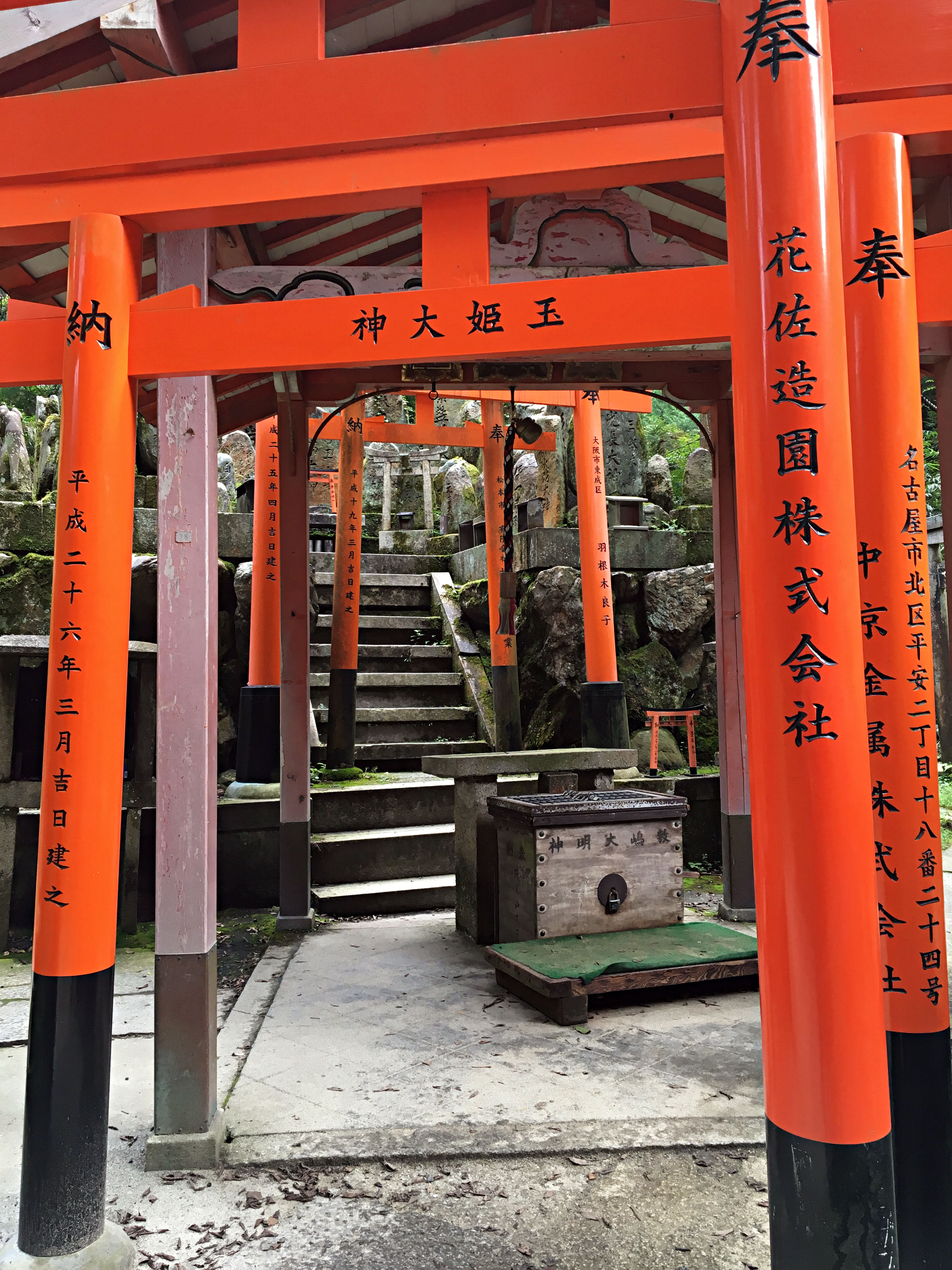
Another portion of the trail opened up and we took a smaller dirt path up a hill. We soon were met by a small narrow concrete brick trail that we followed for a while which eventually took us to another shrine further up the mountain. Here there were some benches that a few other were resting at before continuing onward. We however just kept pushing further along the trail until we came across a bamboo forest. It was brilliant!

After some time with no end in sight of the trail we were on we decided to turn back. Once we made our way back to the trail we continued further up the mountain until we came across a map. We determined we were about halfway up and considering the time it took us to reach this point we decided to call it here and head to the next site. We were trying to get two more sites in and beat a thunderstorm due for the late afternoon.
Our next stop was Tofuku-ji Temple, only one stop back from where we started. It was the stop between Kyoto and Inari stations. While waiting for the train we decided to hit up the vending machine and get us some sweat. Oh yes you read that right, sweat. Pocari Sweat to be exact:
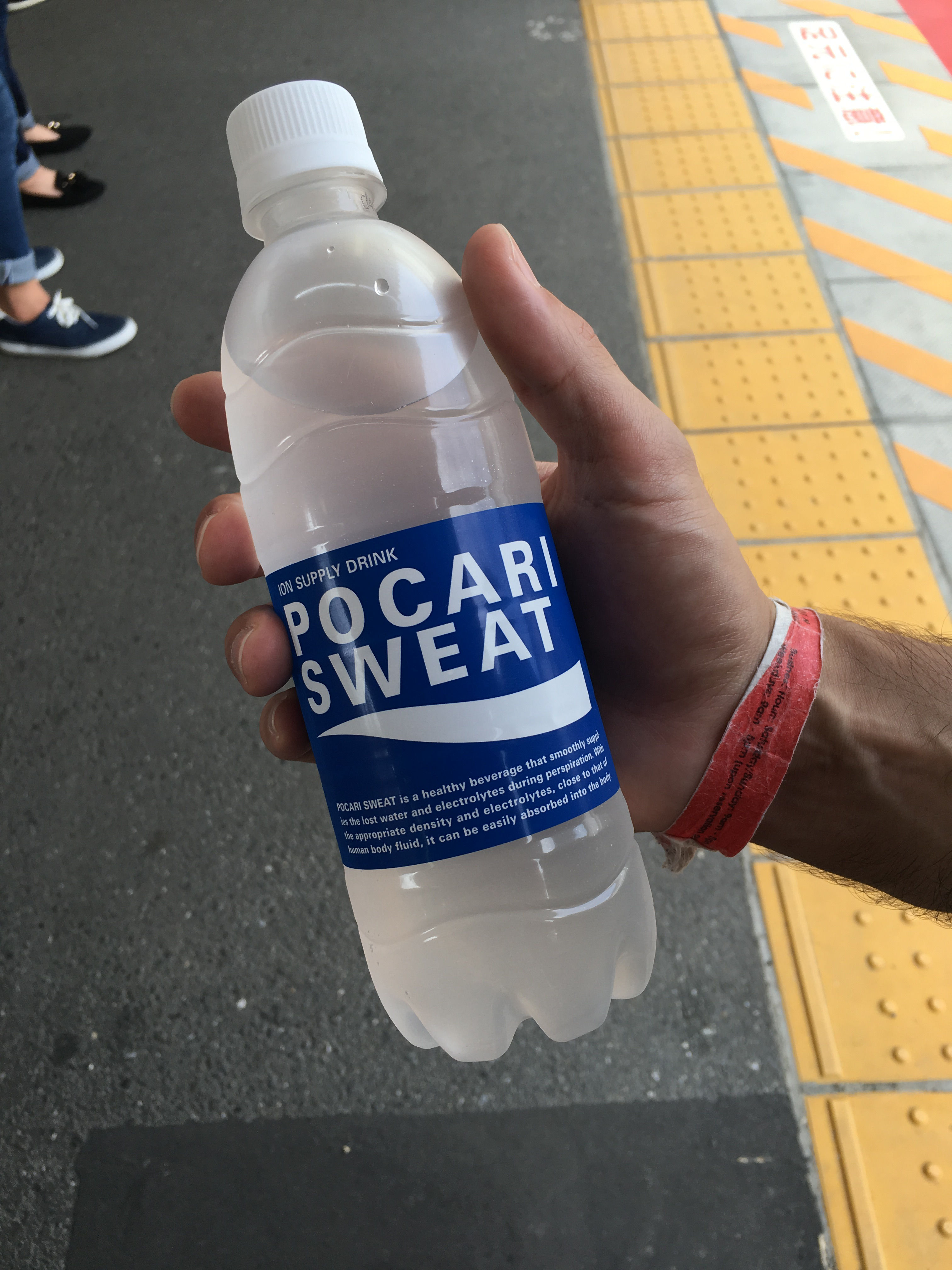
By now, if you find this weird then you need to get a hold of yourself and realize Japan is wild! Anyways, Pocari Sweat soon became one of our faves. It’s flavored water with a mild lemon/lime flavor to it. It’s really thirst quenching and it’s another item I hope I can buy online from time to time.
Ok, onward. The train came and we got off at the next station. We then had about a half mile walk to the temple. We walked down a pleasant quiet street in Kyoto, much like the streets you see anime characters walk down on their ways home.

Once we made it to the temple here was the sanmon gate, which is the oldest in Japan. Tofuku-ji was built in 1236 under the rule of the Fujiwara clan.

The temple also had two other parts that you had to pay for to see and we only saw one part as we had to stay on time to see other sites during the day. We decided to see the Tsutenkyo Bridge, which is a 330 ft (100 m) long covered bridge that overlooks a maple tree valley. This bridge attracts many visitors during the fall for the changing of the leaves we read.

Just beyond the bridge we saw the red wooden structure to our left:
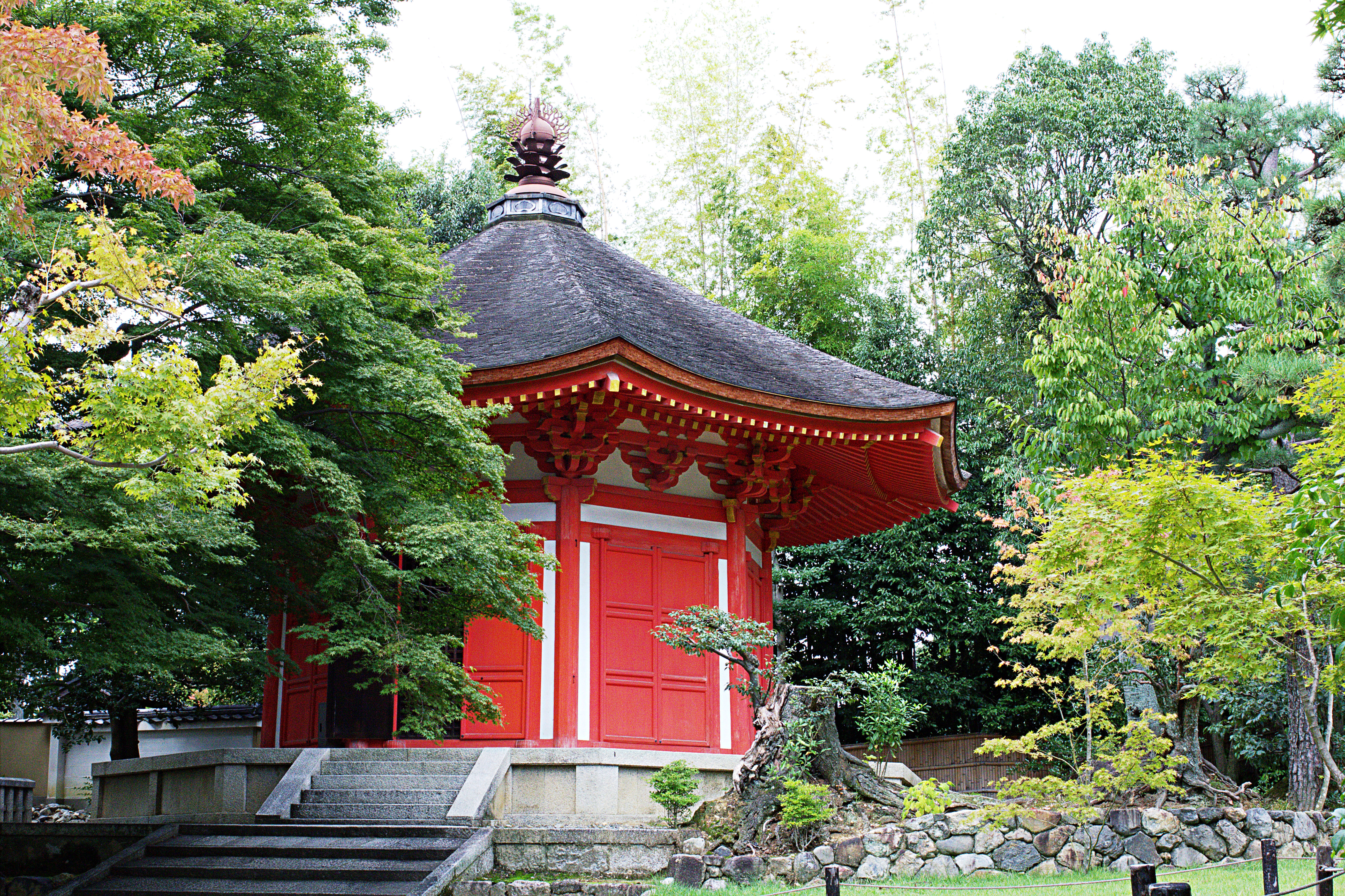
Further along the path but now headed to our right after crossing the bridge we followed a stone walkway up a staircase and into the courtyard of a zen garden. This area was very peaceful and it sounded like all outside sounds had stopped and only a gentle breeze through the area could be felt and heard. We decided to sit down here for a little while and recover a bit and to enjoy the beauty of the garden.
We were confronted with this view when we first entered through the gates leading to the garden:
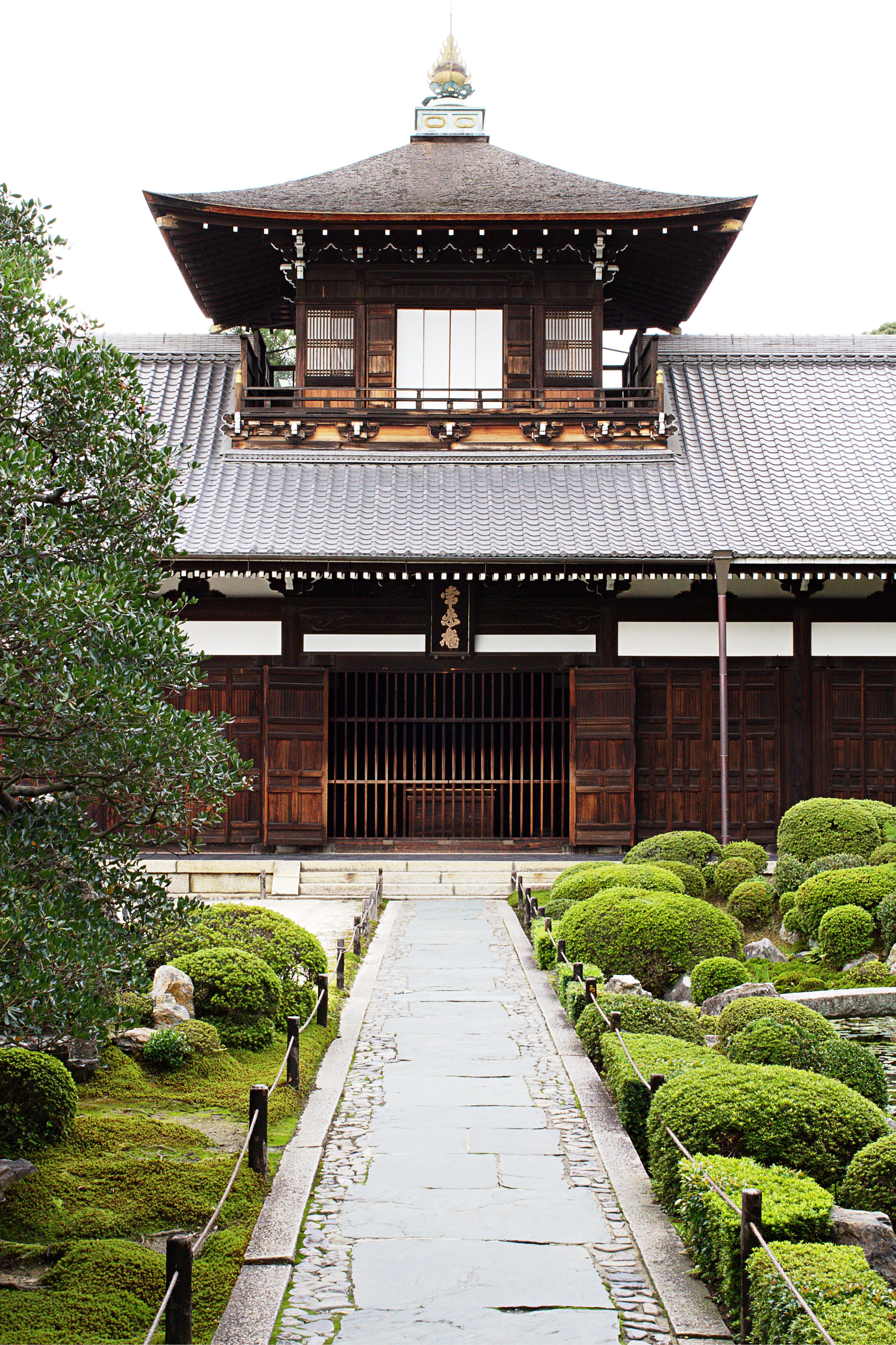

When we felt recovered and ready to move on we walked along more winding paths down into the valley a little ways, which had a creek running through it. The air was cool and refreshing and the sound of the trickling water was very calming. We were now ready to head back to the train station and go to Arashiyama.
At the train station we headed back to Kyoto station and then caught the subway to our hotel only a few blocks away but a little far to walk from Kyoto Station. We went to our room quickly to offload some of the weight we were carrying and then to head back out. We went back to the subway station to ride it out to Arashiyama, as Google told us the lines to take. However, we were not able to locate those lines on the map as it provided little english as far as the station names went so we couldn’t read the kanji names. After a little frustration and time being wasted we decided to call it on Arashiyama and just head to Gion and spend more time there.
Gion is the old Geisha quarters. Now the Geisha are still there, but extremely difficult to find as they are almost always indoors, but can be seen when going to and from their places of work. We did however see a Maiko which, if I’m not mistaken, is an apprentice Geisha. Her kimono was extremely elaborate and very vivid blue/indigo in color. I did not get a picture, but the link above will show an example of a Maiko.
Gion was full of restaurants, shops and people. Despite being as crowded as it was it had an extremely laid-back atmosphere, not much unlike the rest of crowded Japan. On the way to Gion we crossed this bridge and we stood overlooking the view for 15 minutes or so. The breeze off of the river was most welcoming and I don’t think I will forget how I felt there that evening. Not that anything about it stood out in particular, but it was just a good day with my fiancee.

We did some souvenir shopping for our friends and families here. We also got a magnet for our refrigerator. We continued walking around and we saw a small alley-way with a shrine in it. We walked back into the area to find two other people taking pictures there. They left and we just looked about the shrine and were amazed that there’s literally history in Japan in every nook and sometimes you just have to stumble across it. Here’s what we saw:
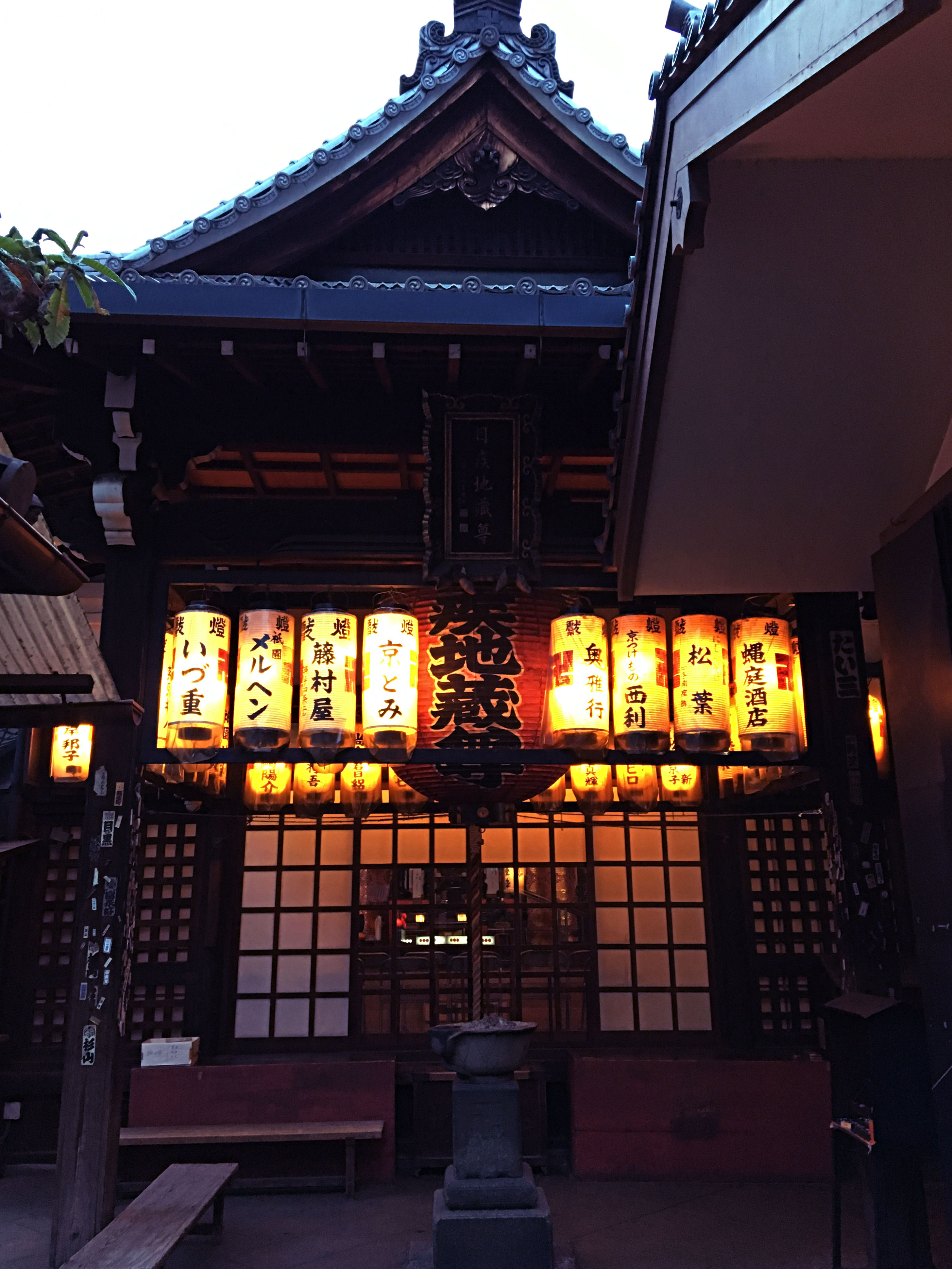
When we left the US I was on a quest for two things, something really fashionable from Tokyo and an old wood block print picture, preferably of samurai or geisha. Well, I looked up wood block print shops and Kyoto and there was one called Daishodo. It was located in a mall that was open to the outside air but covered by a roof still. The mall was very large and covered several streets.

It had a lot of restaurants and clothing stores inside, even an ice cream store (traditional japanese style of course) and don’t forget a huge trove of vending machines. Speaking of which, earlier in the day I saw sparking grape juice and I really wanted it, but for whatever reason I passed it up then. Well I relocated it here at the mall and treated myself to some. Yummy.
The sought after wood block print shop was found further into the mall and it was on a corner of two “streets” in the mall. It was charmingly small and full of block prints. The store felt just like how Ollivander’s Wand Shop from the Harry Potter films looks. We probably spent an hour sifting through thousands of prints. I wish I had more money to spend here as the better pieces were absolutely gorgeous. I think on my next trip back I will get a more expensive piece. Nevertheless here’s the one I got, it depicts bow ashigaru ready for attack:

Ashigaru were soldiers that the samurai employed for combat.
We then made our way back to the area our hotel was in and we saw a small restaurant to try out. Tomorrow, we have to get up early to catch the bullet train back to Tokyo for our last full day in Japan. I will upload the happenings for that day tomorrow.
Return to top



Sorry, the comment form is closed at this time.